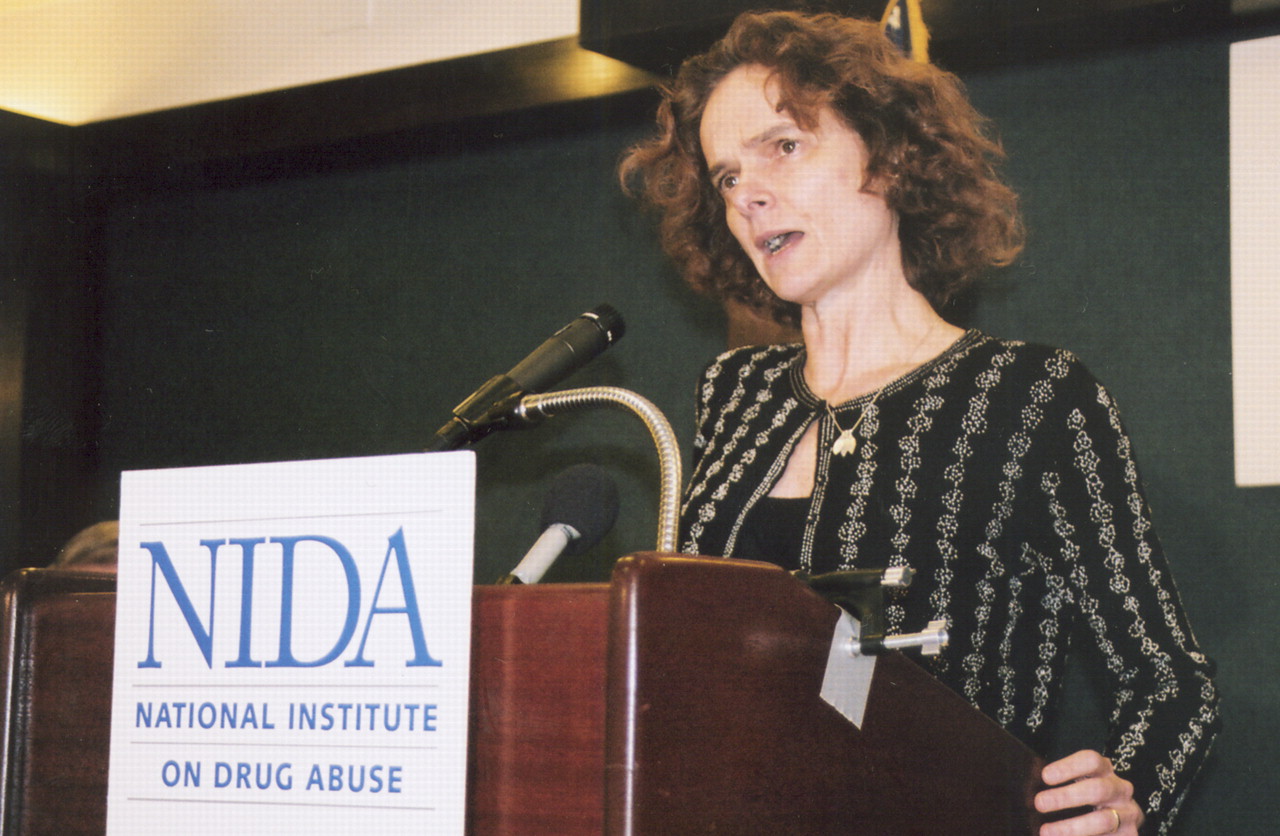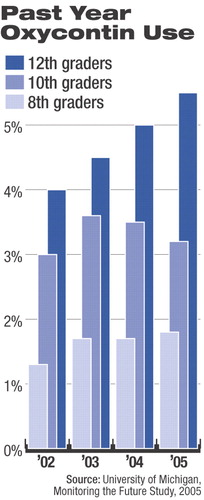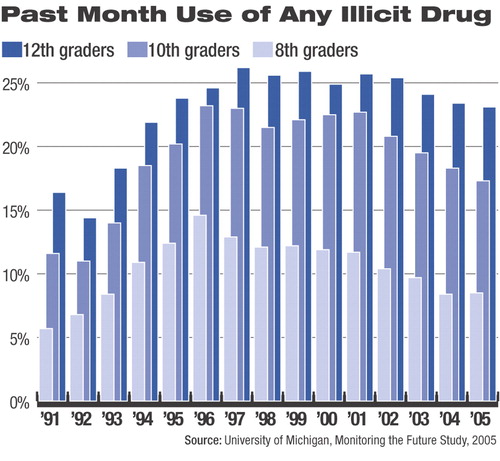More Teens Shun Drug Use, With Some Exceptions

NIDA Director Nora Volkow, M.D., comments on the findings of the 2005 Monitoring the Future Survey at a press conference last month in Washington, D.C. She attributed the general decline in drug use to prevention efforts by the federal government and various health agencies. Eve Bender
Although overall rates of illicit drug use among teenagers have continued to drop over the past few years, the high proportion of those abusing prescription painkillers is reason for concern, government officials reported in December.
According to findings from the 2005 Monitoring the Future Survey, 5.5 percent of high school seniors reported using Oxycontin nonmedically in the past year.
“Given the strength of this narcotic, I find this somewhat worrisome,” said John Walters, director of the White House Office of National Drug Control Policy, at a press conference announcing the findings in Washington, D.C.
Nora Volkow, M.D., director of the National Institute on Drug Abuse (NIDA), pointed out that “the number-two illegal substance reported by school-aged children, preceded by marijuana, is the painkiller Vicodin.”
The reduction in reported illicit drug use “highlights the importance of prevention strategies and demonstrates that prevention works.”
Of the relatively high rates of prescription painkiller use among teens, Walters said, “We do not believe that we have to make people sicker or in more pain to control this.”
Despite the fact that the use rates of certain drugs—narcotic pain relievers, barbiturates, and inhalants, for instance—have risen over the past several years, the proportion of students reporting past month use of any illicit drug has dropped from 19.4 percent in 2001 to 15.8 percent in 2005, a drop Volkow called “remarkable.”
This reduction, she said, “highlights the importance of prevention strategies and demonstrates that prevention works.”
Researchers at the University of Michigan's Institute for Social Research conduct the Monitoring the Future Survey each year among nationally representative samples of approximately 50,000 students in the eighth, 10th, and 12th grades in about 400 public and private schools across the country. The study is funded by NIDA.
The questionnaires are administered to students in their classrooms by University of Michigan staff each spring. The survey has been conducted since 1975 among high school seniors. In 1991 researchers also began to survey eighth and 10th graders.

In 2005 the percentages of teens who reported having tried any illicit drug during their lives were 21 percent, 38 percent, and 50 percent in grades eight, 10, and 12, respectively, down just by one to two percentage points in the lower grades from 2004.
“In other words,” the report stated, “exactly half of the students today have tried an illicit drug by the time they finish high school.”
Findings from the 2005 Monitoring the Future Survey showed continuing downward trends in the use of a number of specific drugs:
In all three grades, the use of marijuana, including hashish, has dropped slightly since 2001, though none of the one-year declines reached statistical significance. Between 2001 and 2005, the percentage of eighth graders who used marijuana dropped from 20.4 percent to 16.5 percent. Similar decreases were seen in lifetime use for 10th graders (40.1 percent to 34.1 percent) and seniors (49 percent to 44.8 percent). | |||||
Amphetamine use in the past month, past year, and lifetime fell among seniors. For instance, the proportion of seniors who reported ever having used amphetamines fell from 15 percent last year to 13 percent in 2005. | |||||
Lifetime use of Ecstasy dropped significantlyamong seniors, from 7.5 percent in 2004 to 5.4 percent in 2005. LSD use also dropped among seniors, from 4.6 percent to 3.5 percent in 2005. | |||||
Use of steroids in the past year dropped among 12th graders, from 2.5 percent in 2004 to 1.5 percent in 2005. | |||||

Teens' use of some drugs increased, however:
Past year Oxycontin use among 12th graders rose from 4 percent in 2002 to 5.5 percent in 2005. | |||||
Lifetime use of barbiturates rose among seniors between 2001 (8.7 percent) and 2005 (10.5 percent). | |||||
Lifetime inhalant use rose among eighth graders between 2002 (15.2 percent) and 2005 (17.1 percent). Past year use also rose in that group, from 7.7 percent to 9.5 percent between 2004 and 2005. | |||||
“These inhalants are highly toxic and highly available,” Volkow pointed out.
According to Lloyd Johnston, Ph.D., principal investigator for the study, the perceived risks of inhalants have been falling since 2001. For instance, 71.6 percent of eighth graders perceived regular inhalant use as harmful in 2001, while 64.1 percent did last year.
“Beliefs about the dangers of these drugs have proven to be very important in driving the actual use of the drugs,” he said, which may signal future increases in inhalant use.
More information about the 2005 Monitoring the Future Survey is posted at<www.monitoringthefuture.org>.▪



